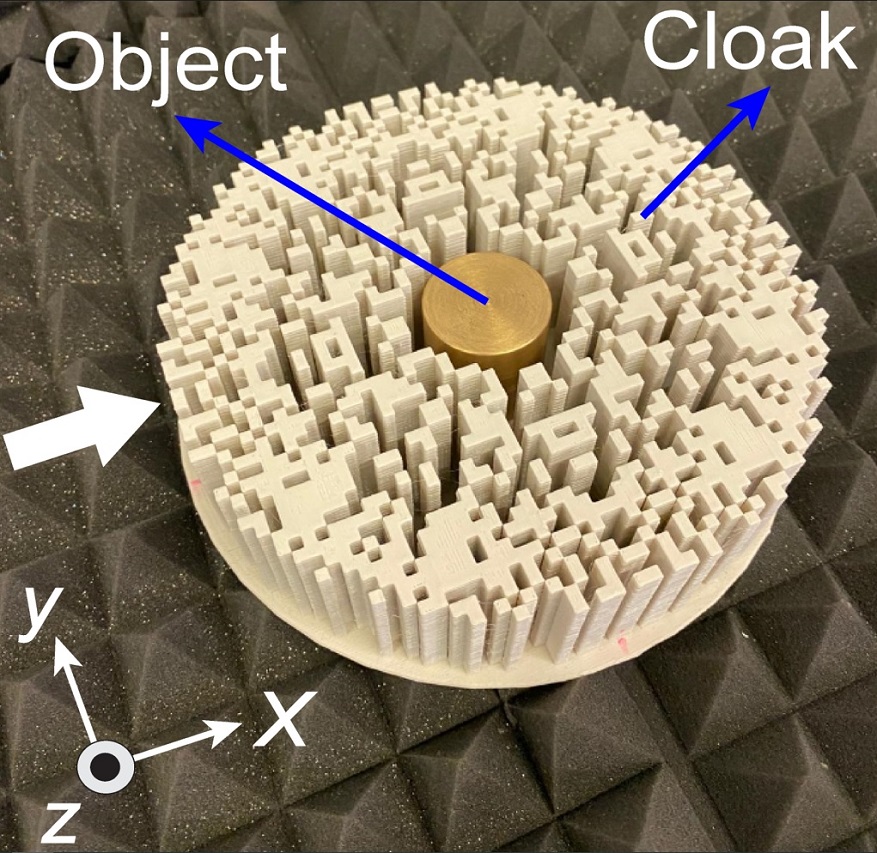Optical "invisibility" is a phenomenon that occurs when an electromagnetic wave incident on an object retains its properties, such as amplitude and phase, after passing through the object. In general, this is impossible due to the effects of diffraction, refraction, and wave scattering. To implement electromagnetic “invisibility” behind the shadow part of the object, which is supposed to be made “invisible”, it should be reconstructed and corrected in such a way that it coincides with the incident wave.
The direction involved in the development of physical concepts for the construction of “invisible” optical materials and surfaces is called transformational optics.
The developed cloak consists of a biodegradable thermoplastic polymer called polylactide (PLA). This polymer is widely used in 3D additive printing technology. It features low loss and a low dielectric constant.“In a study initiated under the guidance of Professor Hamza Kurt (Republic of Korea) and their student Mirbek Turdyev (Kyrgyzstan), we investigated an approach based on the design of a special, completely dielectric structure surrounding the object from a set of elementary “cells”, with a size significantly smaller than the wavelength. The efficient parameters of such a structure were chosen in such a way that the field in its shadow part practically coincides with the incident field. That is, the electromagnetic wave “does not see” the hidden metal object,”
The study was carried out on the basis of modeling by solving three-dimensional Maxwell equations. Using the scalability effect, scientists conducted experimental confirmation in the microwave range. The scientific group plans to expand the capabilities of the method and optimize its characteristics."The advantage and novelty of the proposed scheme is that our approach is based on the implementation of widely used dielectric materials. For example, other existing approaches, such as the methods of transformational optics, require the use of artificial materials that are absent in nature. Using our approach, a structure was developed to create the invisibility effect, which provides its electromagnetic "hiding" from different directions,"
In the future, the considered effects can be used to create various sensors that, when integrated into the medium under study, do not cause field distortions and do not affect the measurement result.
